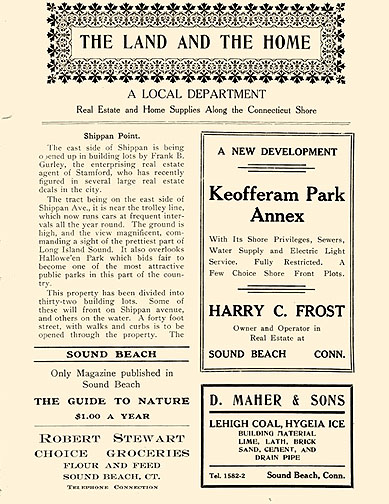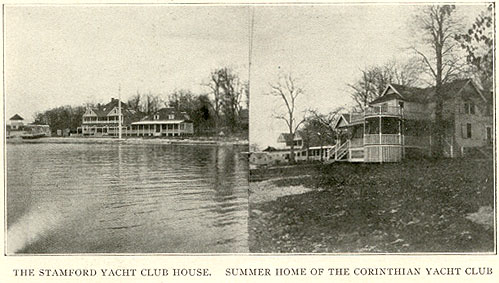| Join | Official Historian | City of Stamford | Blog | About Us | |
| Jewish Historical Society | Civil War Roundtable | Contact Us | |
|
|
|
|
|
|||||||||||
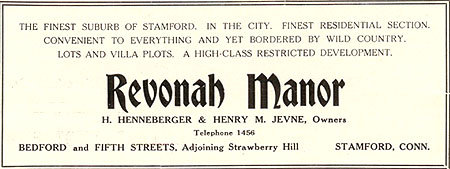 |
|
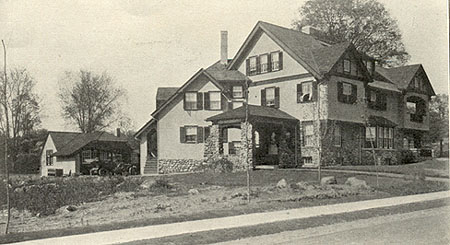
THE HOME OF MR. JEVNE, REVONAH MANOR |
Editor's Note: In 1909, Herman Henneberger and his son-in-law Henry Jevne, in one of Stamford's largest cash transactions, purchased approximately 180 acres from the heirs of Alfred Hoyt. They had been looking for a suitable parcel for speculative development. They initially announced that they planned to use the majority of the property in ten acre lots for the construction of houses similar to the existing houses on Strawberry Hill, mansions which were owned for the most part by successful business and professional people. Having not much success with this, they then decided to subdivide the southerly portion of their property into smaller lots. Minimum lot sizes of 100 by 150 feet were established, for a racially and ethnically restricted upper middle class enclave, with no home to be built for less than $6500. Revonah (Hanover spelled backwards) Manor is the best preserved example of one of Stamford's first planned communities. |
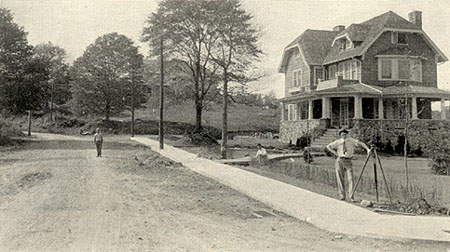 THE HOME OF MR. PARSONS IN REVONAH MANOR |
|
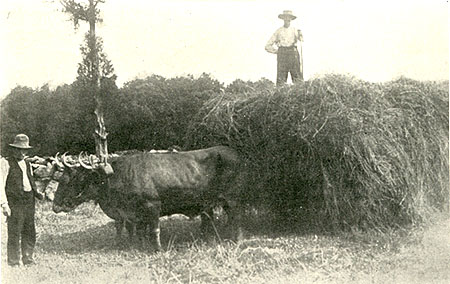 |
And finally this article: Connecticut Farms.
Much has been written about Connecticut farms being deserted. This may be true of certain sections where the farm land is some distance from the railroad, making the transportation of product cost more than the proceeds.
A drive over the hills in the suburbs of Stamford, will show the visitor that farming is not a failure in this part of Connecticut. Starting from Strawberry Hill, and driving north, we come to the large peach farm of Robert L. Case. During the season of this luscious fruit, the sixty acres of peach trees, yield something like ten thousand baskets of marketable fruit.
Mr. Case employs twenty-five pickers in the orchards, and twelve sorters in the fruit house, which is a large barn of ancient date. It is a wonderful sight to view rows upon rows of rosy cheeked peaches on the floor of the barn. A ready market is found in Stamford, Greenwich, Portchester and New York City.
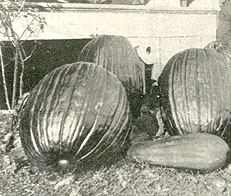 |
The next farm of about seventy-five acres, is owned by Hiram Sammis. This is as finely situated as any farm on Newfield Avenue. Mr. Sammis raises principally potatoes and field corn, pumpkins, hay and rye which go toward the support of his herd of fine cows. Some of the large pumpkins weigh in the neighborhood of two hundred pounds.
To the west of the Sammis farm is a strip of woodland, mostly of chestnut trees, and beyond are the hay fields, where many tons of hay are harvested in the summer.
Indian Spring, the summer home of Mrs. Thomas S. Gray, shows care and culture in its surroundings. The house is about fifty years old and was for years the home of the late George Fox.
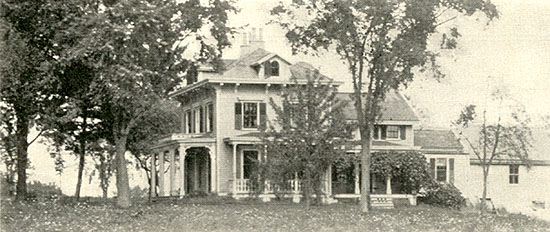 |
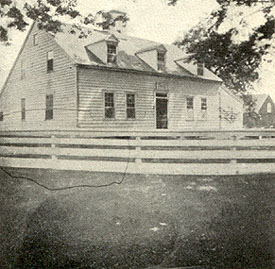 |
The article ends with a photo of the Davenport Homestead, although the relevance is not clear.
Other Photo Archivist Selections of the Month
Photo Collection Information
